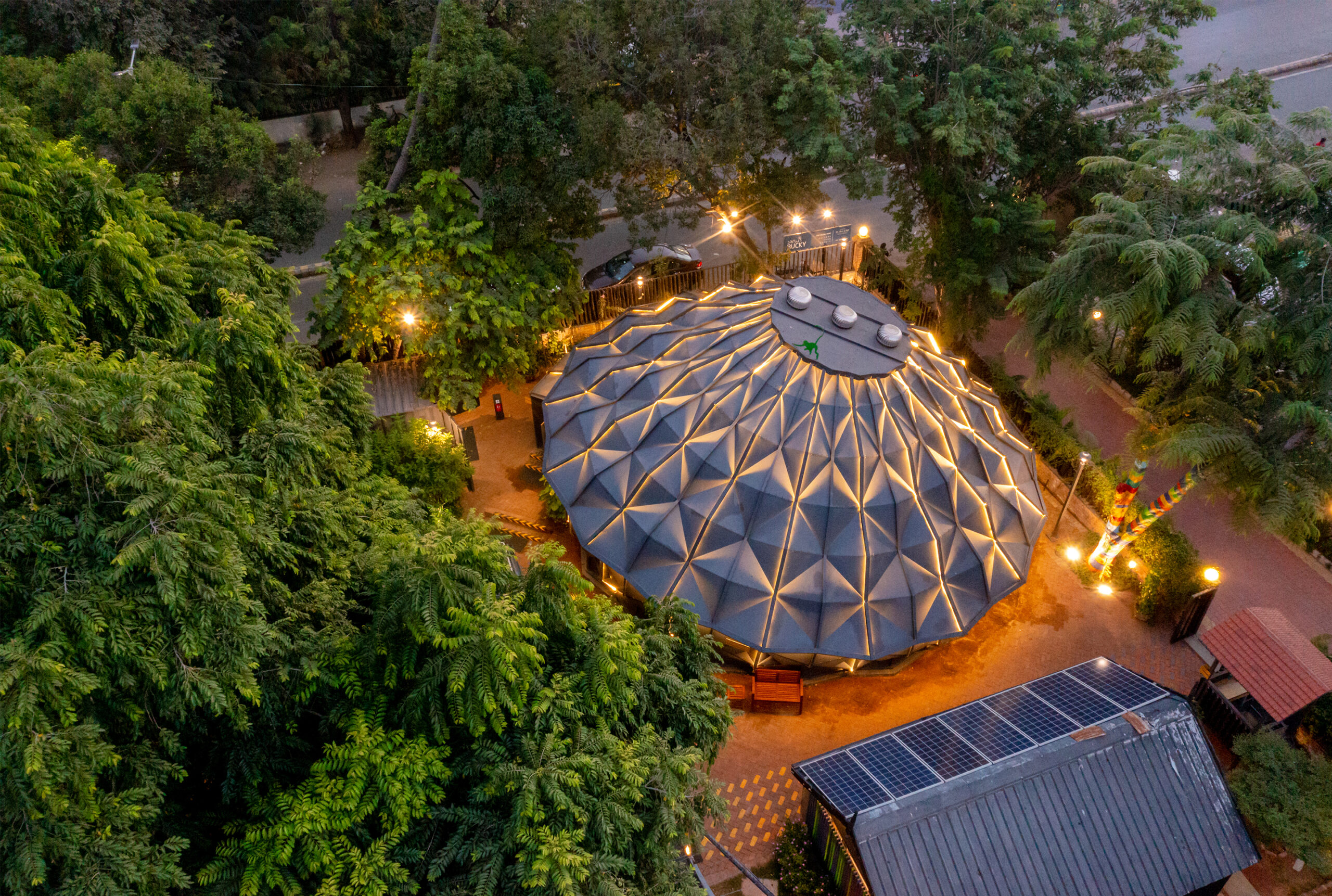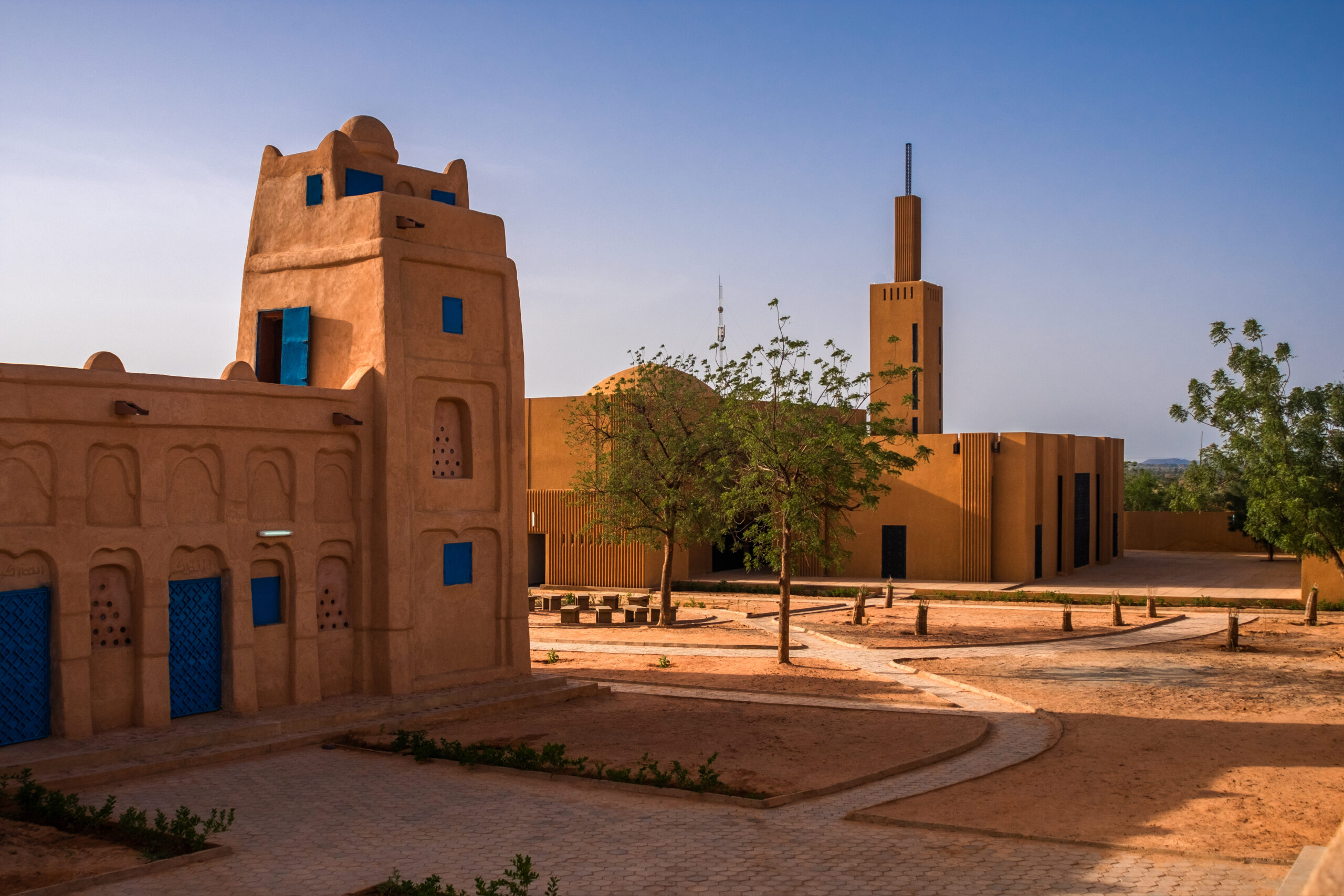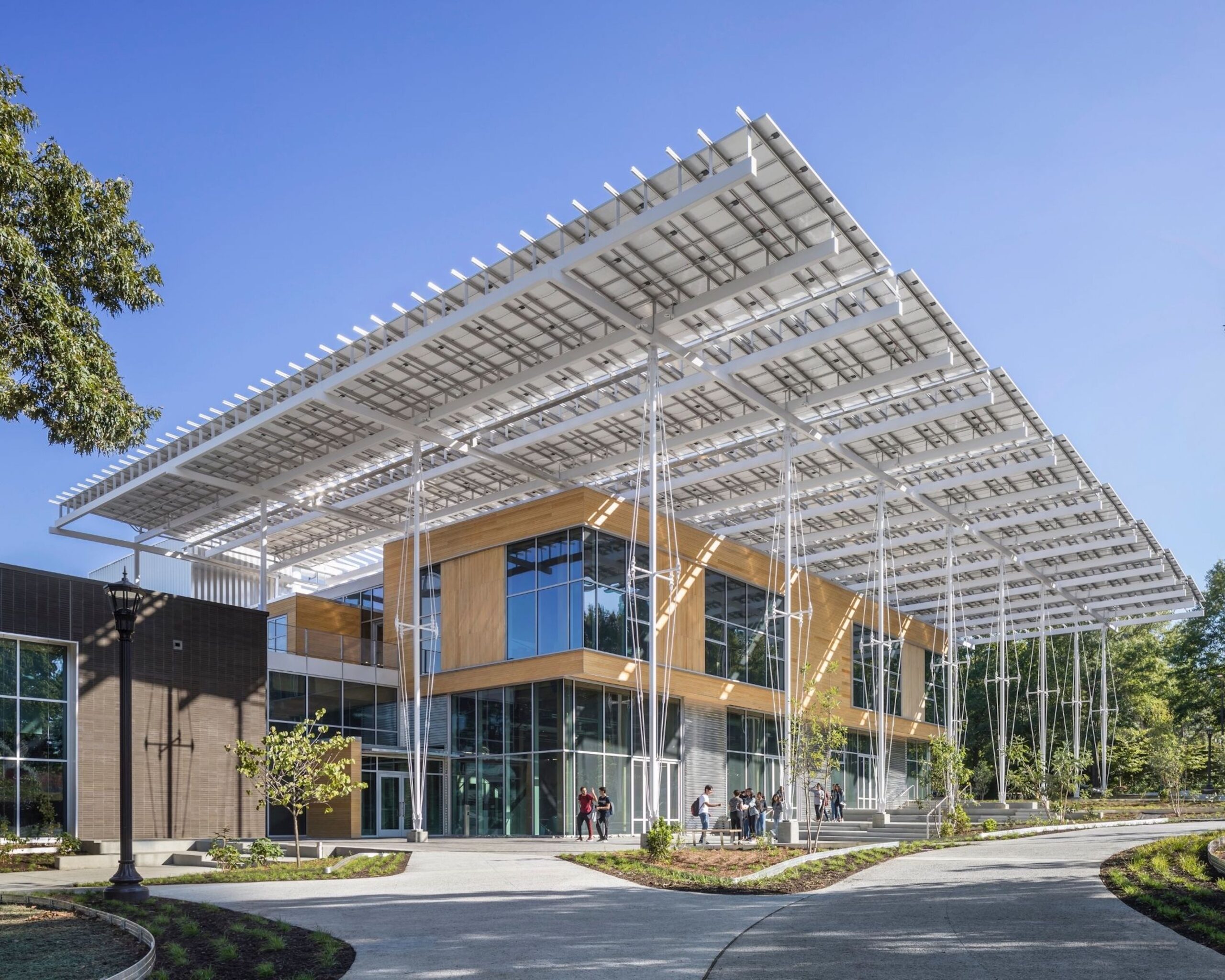Call for entries: The 14th Architizer A+Awards celebrates architecture's new era of craft. Apply for publication online and in print by submitting your projects before the Main Entry Deadline on December 12th!
Temporality is ingrained within culture. In a contemporary sense, artistic movements and scenes ignite at a specific moment. Spaces for creativity are often treasured by one generation and then discarded by the next. Even world-renowned, century-spanning institutions regularly work in jarringly short funding cycles.
As such, andblack design studio’s Darwin Bucky makes perfect sense, even before we factor in the environment. As the creators put it, “permanently impermanent buildings are the future” in a world that desperately needs to rethink construction and mitigate the ecological damage it causes. But when thinking about venues, from art galleries to music halls, the elephant in the room — and the sad truth — is that these places can rarely operate indefinitely.
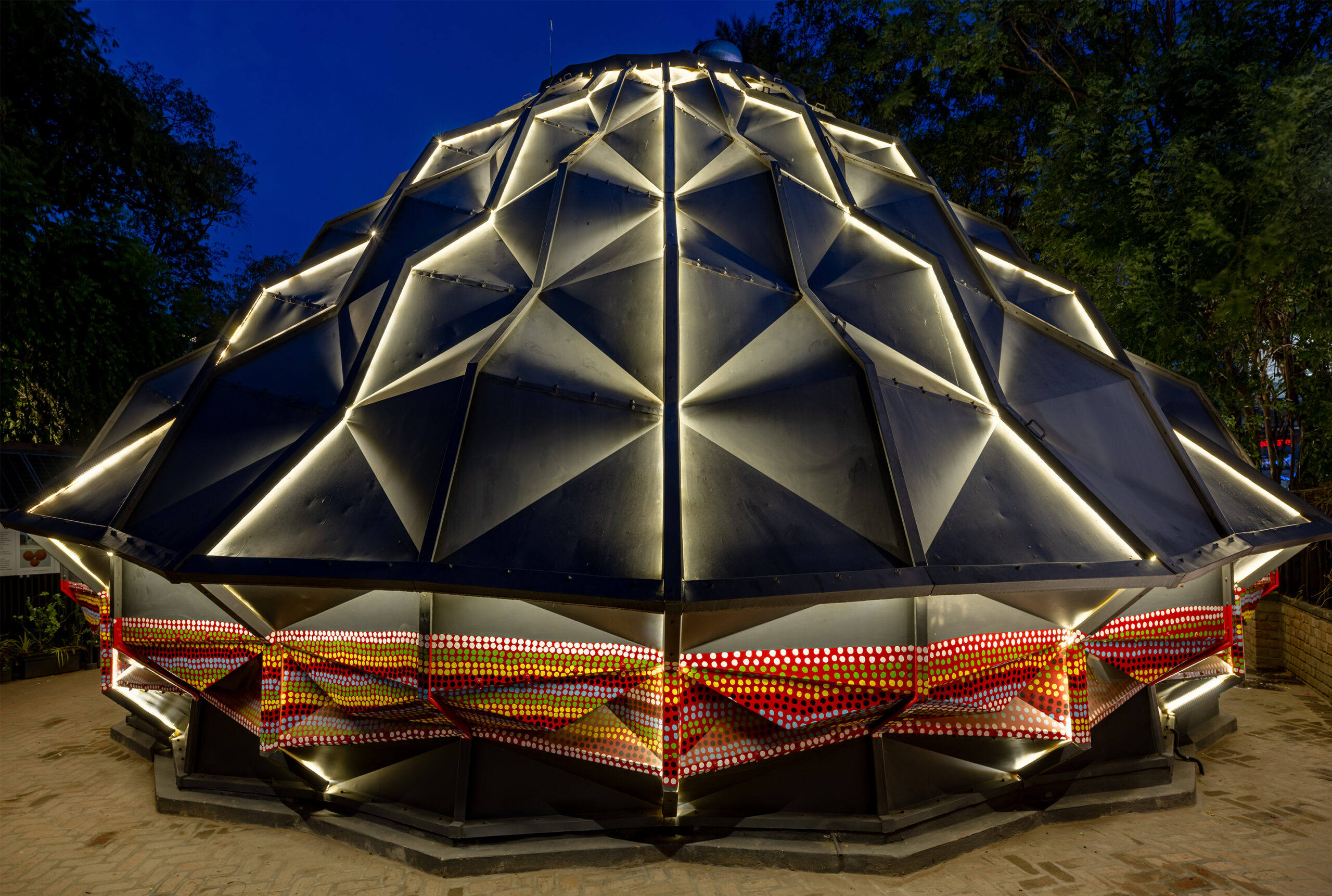
Darwin Bucky is a temporary, moveable events space, by andblack design studio
Function leading form, andblack’s multipurpose, prefabricated structure has been designed for performance. At the erection stage, that means lightweight insulated modular panels for efficient transportation and an instruction manual that makes dry assembly quick and easy on site. No fuss, let alone cranes. Completed in a matter of days, this lunar-esque steel, aluminum, wood and glass parametric pavilion provides an alternative to exhibition and cultural centers, with capacity for 100 people, built-in lighting and audio-visual systems, modular framework for displaying work, air conditioning and a conical shape for the best possible acoustics.
A prototype, constructed in Ahmedabad, India, makes the impact clear. Darwin Bucky could be deployed in a multitude of places for myriad reasons, but one of the strongest use cases is in locations that need the type of resource this can house, but suffer from poor transport connections, limited electrical supplies and an unfavorable environment for construction or strict laws preventing building in the area. Given rural settlements from North America to Australia are usually far worse served when comes to culture, and often lack associated infrastructure, improving access should resonate with anyone who has experienced life at a distance from major urban centers.
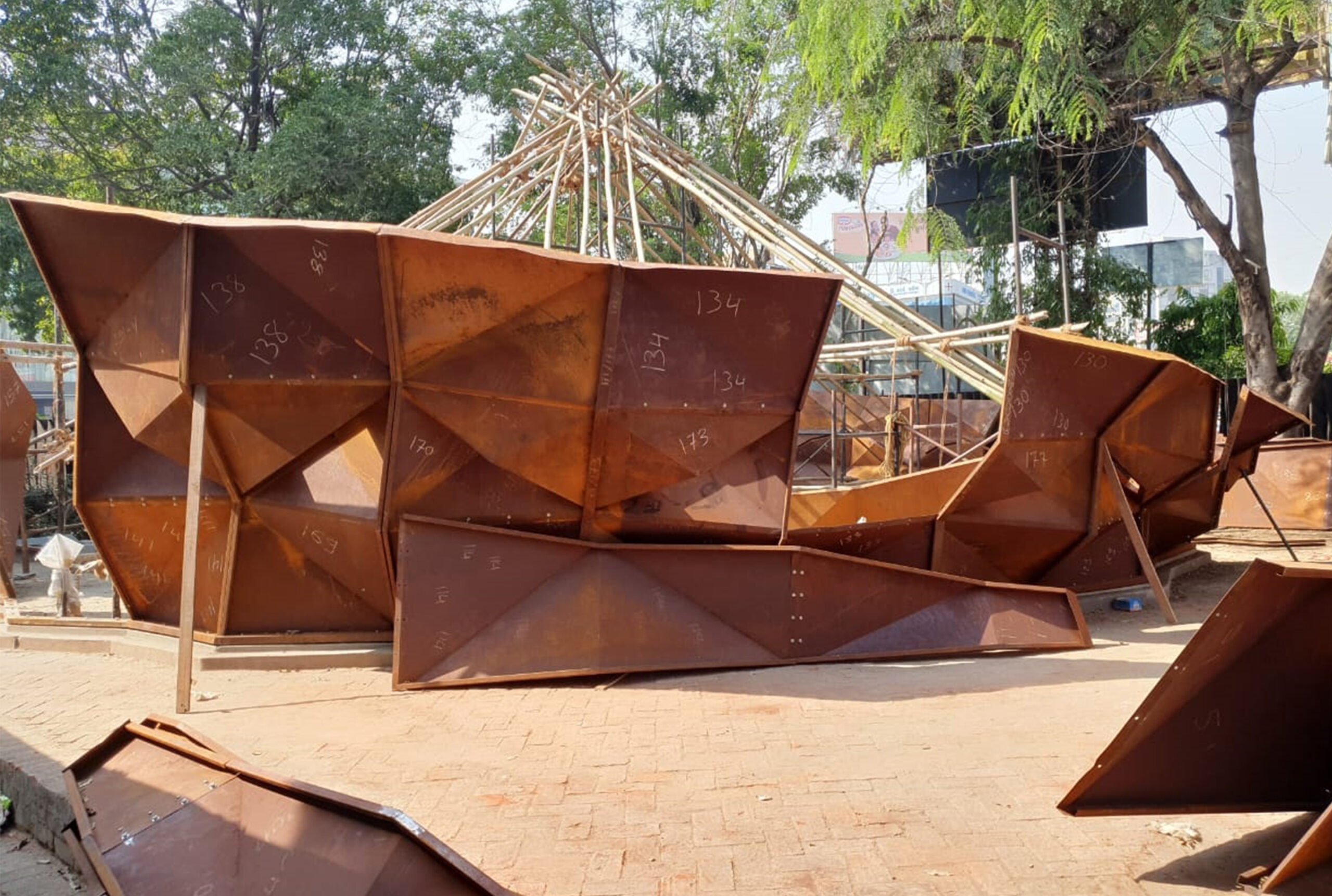
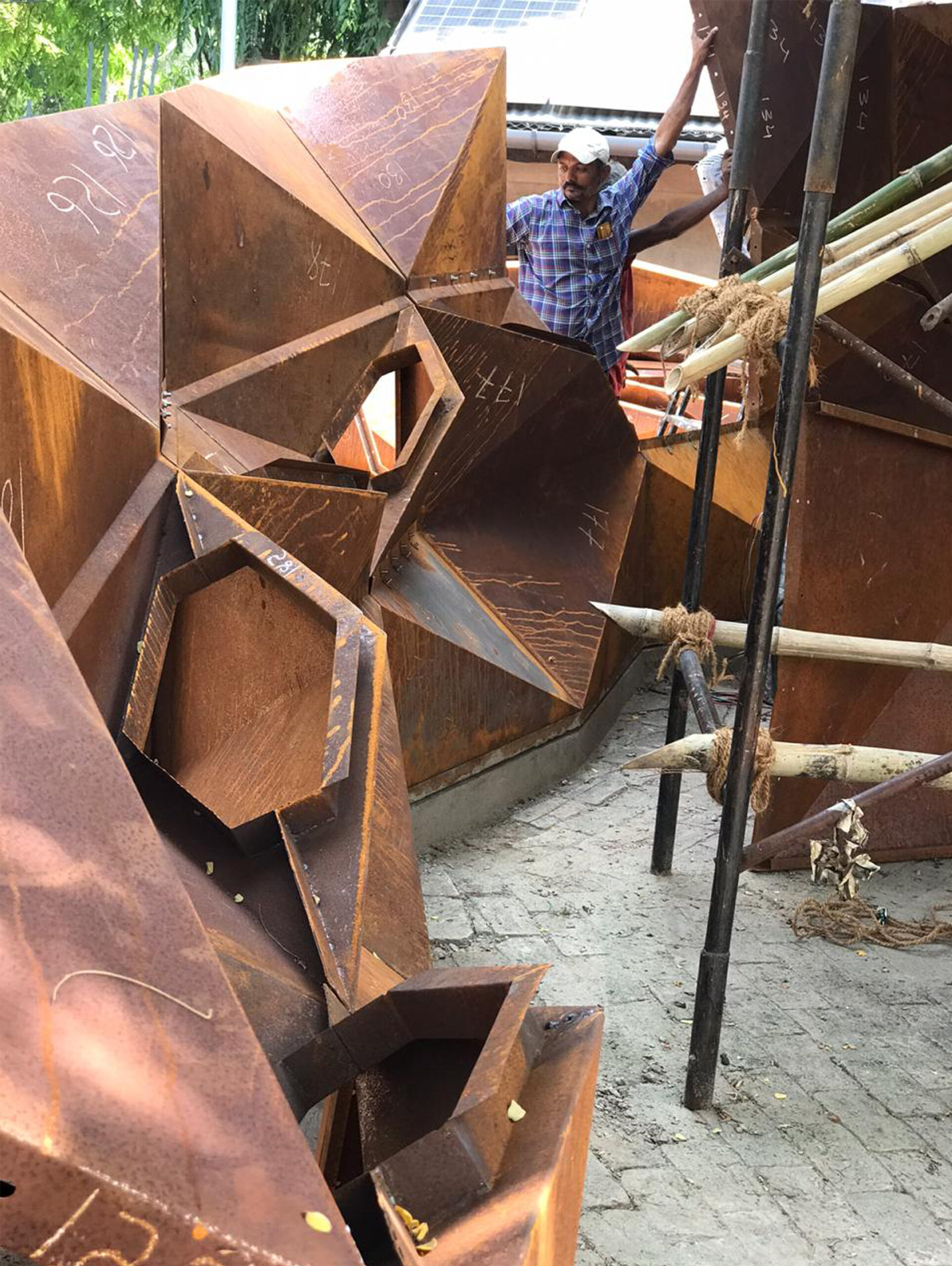
Constructing Darwin Bucky, by andblack design studio
Of course, the fundamental aim here is more complex. Cohabitation with nature is something many parts of the globe have catastrophically failed to do, hence so many species falling off the face of the Earth — sometimes before we even had time to discover them. So a blueprint for how we can have less of a disruptive effect on landscapes and habitats, while still creating spaces for practices that are intrinsic to communities and humanity, is essential. Leave no trace may be near-impossible, but by developing a system specifically made not to last, at least not in a single position, we step in the right direction.
Many Western countries are only just stirring from a long slumber in which it was assumed their way of building was the best — inflexible, fixed, stubbornly modern. But there’s a growing realization that more impermanent and adaptable designs offer the greatest environmental payoff. Ironically, these types of structure are still relied upon in many parts of the world we consider disadvantaged. In 2023, India may be the fifth largest economy on the planet (leapfrogging its former colonizer, Britain) and home to extreme wealth, but the income divide is brutally pronounced, and the most vivid differences are between megacity luxe apartments and remote towns and villages.
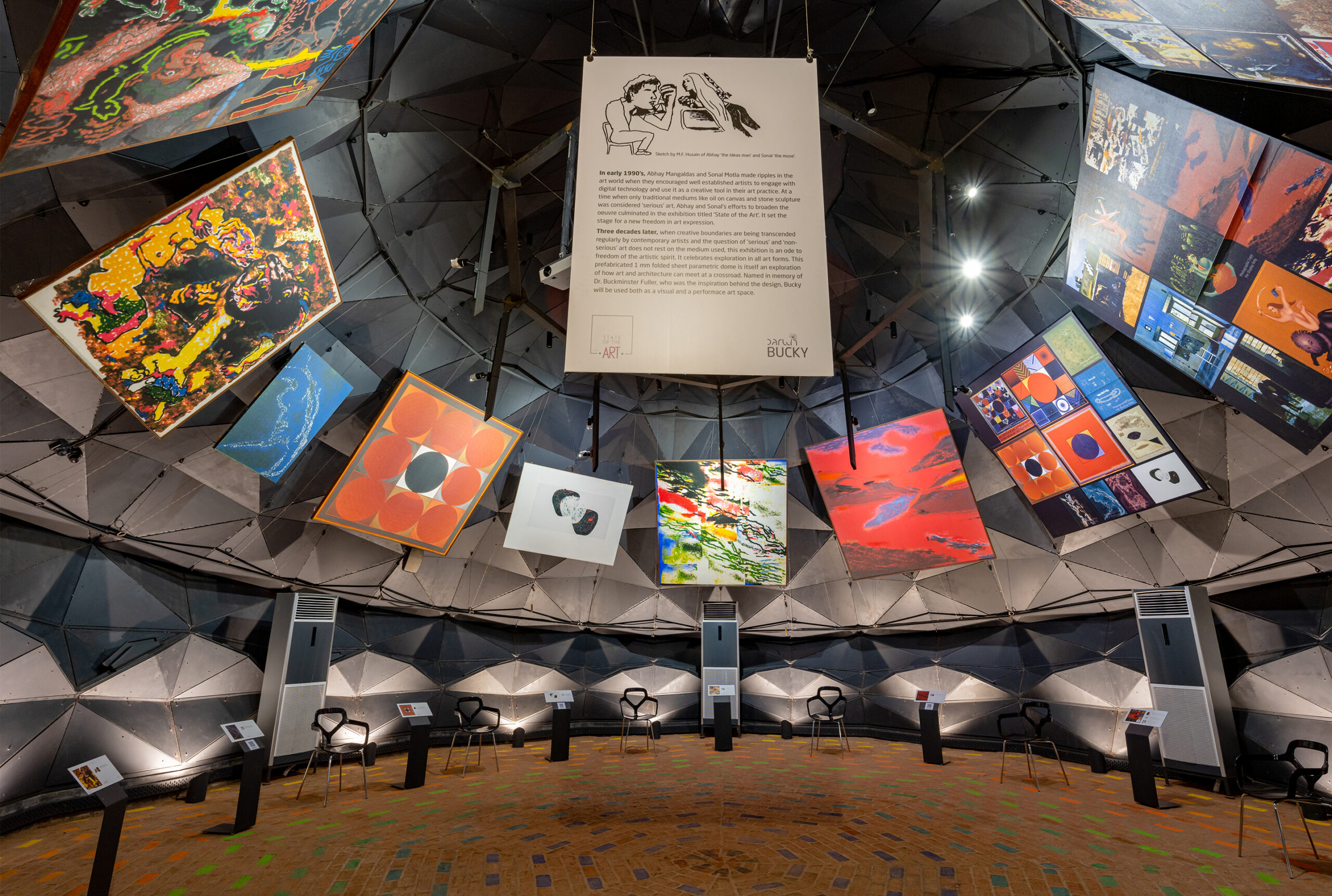
Art pieces on display inside Darwin Bucky, by andblack design studio
Darwin Bucky design is, essentially, a 21st-century interpretation of the simple and sustainable buildings we’ve seen for millennia, and still do in some parts of the world. But true sustainability goes further than climate, and this design acknowledges that. Three years after the start of a pandemic that shuttered life and decimated cultural sectors, we’re in the midst of real estate and cost of living crises, where things have never been worth more, but there’s never been less money to share around.
These connected but separate issues have led to a worst case scenario: just when cultural spaces need us the most, we have little cash to spend at events. Add sky high rents, and ludicrous property values, and the existential threat is laid bare. Based on the current trajectory, we are fast creating environments where art, music and other creative expressions can barely afford to exist. While not without significant cost itself, in theory Darwin Bucky presents new opportunities for shared ownership, rental networks and resale. It can and will be reused when and where a space is most needed. That concept may feel odd at first, given our obsession with heritage and location, but it could be ideal in these unarguably strange times.
Call for entries: The 14th Architizer A+Awards celebrates architecture's new era of craft. Apply for publication online and in print by submitting your projects before the Main Entry Deadline on December 12th!
